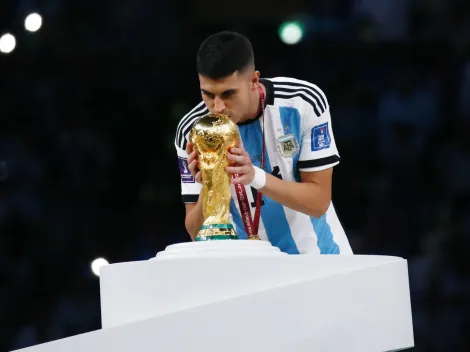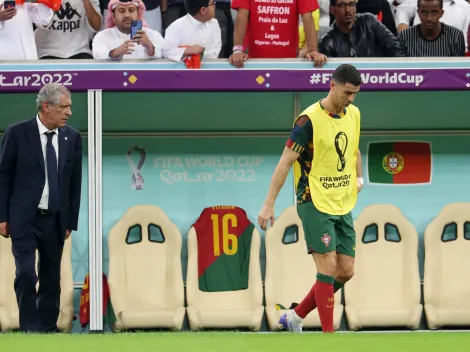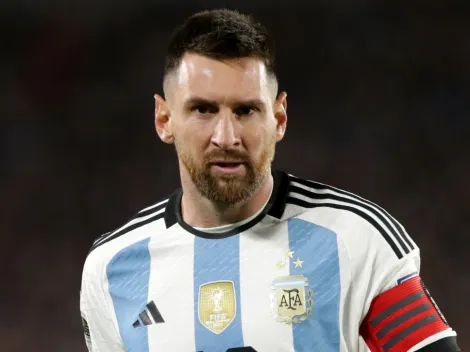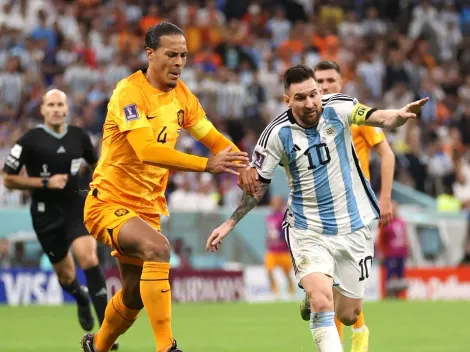The FIFA World Cup experience doesn’t just involve action on a soccer field of play with 22 athletes battling for a ball. It goes beyond the sporting and that makes it a world-class event, appealing to all types of audiences.
Qatar 2022 is getting closer and closer and with it the many surprises that will be enjoyed throughout the 27 days of the tournament. This tournament will be totally wrapped in an unusual atmosphere for soccer: it is the first time that a World Cup will be held in the Middle East.
Thus, all the folklore and cultural richness of a country like Qatar will be available to all those who take the time to enjoy the upcoming FIFA World Cup. Part of this Arab and local tradition was embodied in the official mascot of the 22nd edition of this tournament, as it is already a custom with most of the previous editions held.
Official mascots, the symbol of the FIFA World Cup
Many of the memories of the editions of the FIFA World Cup that we have seen involve precisely these characters created exclusively to be the symbol of each of these tournaments. Thus, marketing has been in charge of eternalizing the official mascots in the memory of the fans.
Established as symbols of the FIFA World Cup, and as true commercial successes, the official mascots have a relatively long history. The first time a character created exclusively to be the caricatured image of this tournament appeared was in England 1966.
Previously, there had already been glimpses of what would become a tradition in the history of the World Cups. Thus, during Sweden 1958 and Chile 1962, there are records of an attempt at a mascot that, although it had notoriety during those editions, was not recognized as the official mascot and therefore did not have the marketing impulse of FIFA to consolidate it in the collective imagination.

Franz Beckenbauer and Goleo, Germany 2006 Official Mascot. (Junko Kimura/Getty Images)
Official mascots in FIFA World Cup history
Including La’eeb, there are now 15 official FIFA World Cup mascots in its 92-year history. This character is a symbol of each edition because it is created based on traditions, customs or other powerful cultural symbols of the host countries. Thus, the mascot of Qatar 2022 totally refers to the Arab culture.
Who does not have a World Cup souvenir, purchased in any country in the world or brought expressly from the host country of an edition of this tournament, whose central image are both the official logo of the tournament and its symbol par excellence, i.e. its official mascot.
England 1966- World Cup Willie
Eternally remembered for being the first official mascot in the history of the FIFA World Cup. It is a friendly lion with anthropomorphic overtones whose profession is footballer, wearing a jersey showing the flag of the United Kingdom. A clear nod to England’s coat of arms which contains 3 such animals.

FIFA World Cup England 1966 Official Mascot. (George Stroud/Daily Express/Hulton Archive/Getty Images)
Mexico 1970 – Juanito
More cultural references. Taking into account since 1900, the most common or most used name in Mexico is Juan. The mascot of the 1970 edition of the World Cup was called Juanito, a boy who wore a soccer uniform and the traditional Mexican straw hat with a huge beak.

FIFA World Cup Mexico 1970 Official Mascot. (FIFA)
Germany 1974 -Tip andTap
In 1974, the political and ideological division of a Germany torn in half was latent. Tip and Tap are two brothers, one blond and tall, the other dark and short, who represent the two fragments of the country united, twinned to celebrate the FIFA World Cup.

FIFA World CupGermany 1974Official Mascot. (FIFA)
Argentina 1978 -Gauchito Mundialito
From the 17th to the 19th century, the people who inhabited the plains and nearby areas of countries such as Argentina, Uruguay and Paraguay were called Gauchos. They represent rural tradition and custom and are true cultural icons. The mascot of the 1978 edition of the FIFA World Cup was a boy soccer player with Gaucho shades: hat, handkerchief, rake and a whip.

FIFA World Cup Argentina 1978 Official Mascot. (FIFA)
Spain 1982 – Naranjito
If there is one fruit that can be described as typical of the beautiful Spanish region of Andalusia, it is the orange. That is why this fruit was used as the official mascot of the 1982 FIFA World Cup: it was dressed in the uniform of the Spanish national team and held a soccer ball.

FIFA World Cup Spain 1982 Official Mascot. (FIFA)
Mexico 1986 – Pique
In case you needed to know where the 1986 World Cup would be played, its mascot left no room for doubt. Pique is a jalapeño bell pepper, a typical Mexican food ingredient, wearing a soccer jersey and a big straw hat.

FIFA World Cup Mexico 1986 Official Mascot. (FIFA)
Italy 1990 – Ciao
There is probably no other official mascot in the history of the FIFA World Cup more conceptual than Ciao. It is an abstract human-shaped figure made up of cubes whose head is a soccer ball. Its name comes from the typical Italian greeting.

FIFA World Cup Italy 1990 Official Mascot. (FIFA)
USA 1994 -Striker
In an effort to honor the loyalty of the American fans to this sport, it was decided that the official mascot of the 1994 World Cup would be a dog, wearing a soccer uniform with cleats included. This figure was created by the Warner Bros. animation studios.

FIFA World Cup USA 1994 Official Mascot. (FIFA)
France 1998 – Footix
This official mascot is a faithful reflection of many of the French symbols by nature. A rooster, a clear nod to the Gauls, as the Romans called this territory when they discovered it, and the colors of the French flag: white, blue and blue.

FIFA World Cup France 1998 Official Mascot. (Clive Rose/Getty Images)
Korea Japan 2002 – TheSpheriks: Ato, Kaz and Nik
Since Germany 1978, the FIFA World Cups have not had more than one element as a mascot. Korea Japan was the first edition to be held in two host countries and also the first, to date, to use three figures as mascots. The Spheriks are semi-transparent futuristic creatures in a nod to Asia’s constant technological innovation.

FIFA World Cup Korea Japan 2002 Official Mascots. (Chung Sung-Jun/Newsmakers)
Germany 2006 -Goleo VIand Pille
One of the most criticized official mascots, since if there is an animal that represents Germany, it is the eagle. Goleo was not well received for not having much relation with the host country of the FIFA World Cup 2006, as it is a lion wearing a German national team jersey with a talking ball named Pille.

FIFA World Cup Germany 2006 Official Mascot. (Andreas Rentz/Getty Images)
South Africa 2010 -Zakumi
The name of the FIFA World Cup South Africa 2010 mascot means “Come here” in some African languages. There is also the version that it was named after the ISO code of South Africa and the word “Kumi” which means ten. It is a cunning and jovial African leopard, a very common anmial in that country, dressed as a soccer player.

FIFA World Cup South Africa 2010 Official Mascot. (Lefty Shivambu/Gallo Images/Getty Images)
Brazil 2014 – Fuleco
It is a friendly armadillo of the Tolypeutes tricinctus species, typical in Brazil. Its name was formed with the union of the syllables of “Futbol” and “Ecology“. The name was chosen by a vote. In order not to lose the habit, it is dressed in a soccer uniform.

FIFA World Cup Brazil 2014 Official Mascot. (Laurence Griffiths/Getty Images)
Russia 2018 – Zabivaka
This mascot was chosen by vote and beat other mascots with cat and tiger figures. Zabivaka is an anthropomorphic wolf, dressed in a soccer uniform and snow goggles, a common meteorological phenomenon in Russia. It means “the one who scores” in Russian.

FIFA World Cup Russia 2018 Official Mascot. (Francois Nel/Getty Images)
Qatar 2022 -La’eeb
Its meaning in Arabic is “skillful player”. It represents a Kufiyya, a typical garment of the Arab world, a kind of very large turban, which is usually made of linen and is used to cover the head, nose and mouth from the sun and the desert sand. It is the first official mascot of a FIFA World Cup since Korea Japan 2002 that does not have an anthropomorphic shape.

FIFA World Cup Qatar 2022 Official Mascot. (Shaun Botterill/Getty Images)





